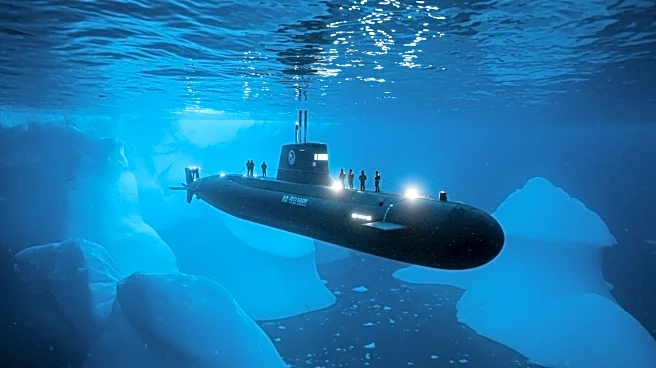What is the story about?
What's Happening?
The University of Gothenburg led an ambitious Antarctic mission using the autonomous submersible Ran to explore the Dotson Ice Shelf. Over 27 days, Ran traveled more than 1,000 km beneath the ice, collecting high-resolution multibeam maps of the ice underside. These maps revealed a complex landscape with terraces, steep fracture walls, and teardrop-shaped cavities, indicating diverse basal-melt mechanisms. The mission faced high risks due to the challenging under-ice navigation, which can lead to vehicle loss if communication fails.
Why It's Important?
The findings from the Dotson Ice Shelf challenge existing ice-ocean models by providing detailed observations of basal melt variability. This data is crucial for improving sea-level rise projections, which are essential for coastal defense planning and adaptation strategies. The mission's success highlights the importance of under-ice autonomous vehicles in delivering data that satellites cannot, thereby enhancing the accuracy of climate models and predictions.
What's Next?
Future missions are planned to penetrate deeper into other ice shelves to test the generality of the observed melt patterns. These efforts aim to reduce uncertainties in sea-level forecasts, providing more reliable data for policymakers and planners. The continued exploration of Antarctica's ice shelves will contribute to a better understanding of global sea-level rise dynamics.
Beyond the Headlines
The mission underscores the critical role of advanced technology in climate science, offering insights that can reshape our understanding of ice shelf dynamics. The integration of under-ice data with satellite observations could lead to more comprehensive climate models, influencing long-term environmental policies and strategies.
AI Generated Content
Do you find this article useful?











